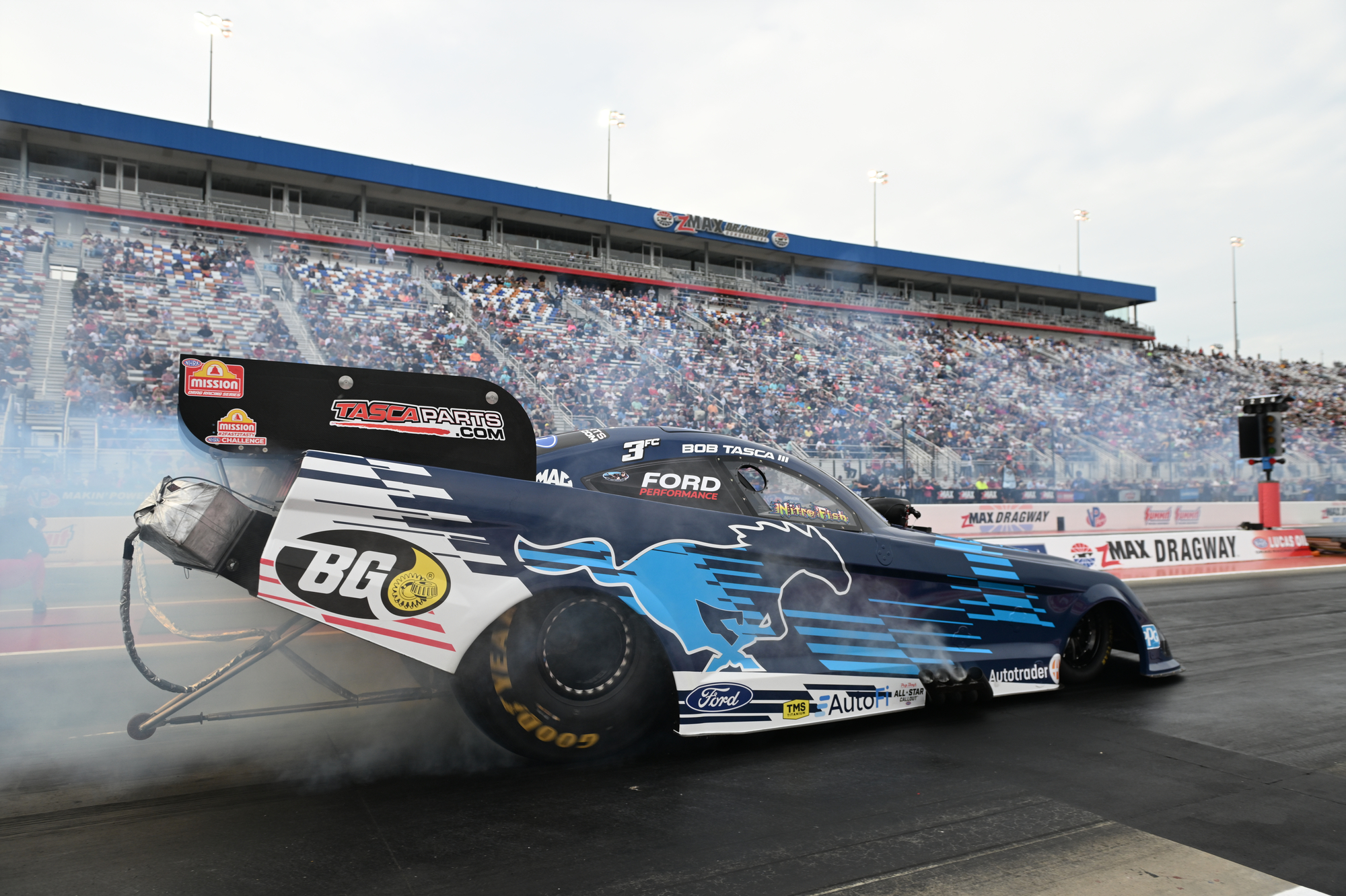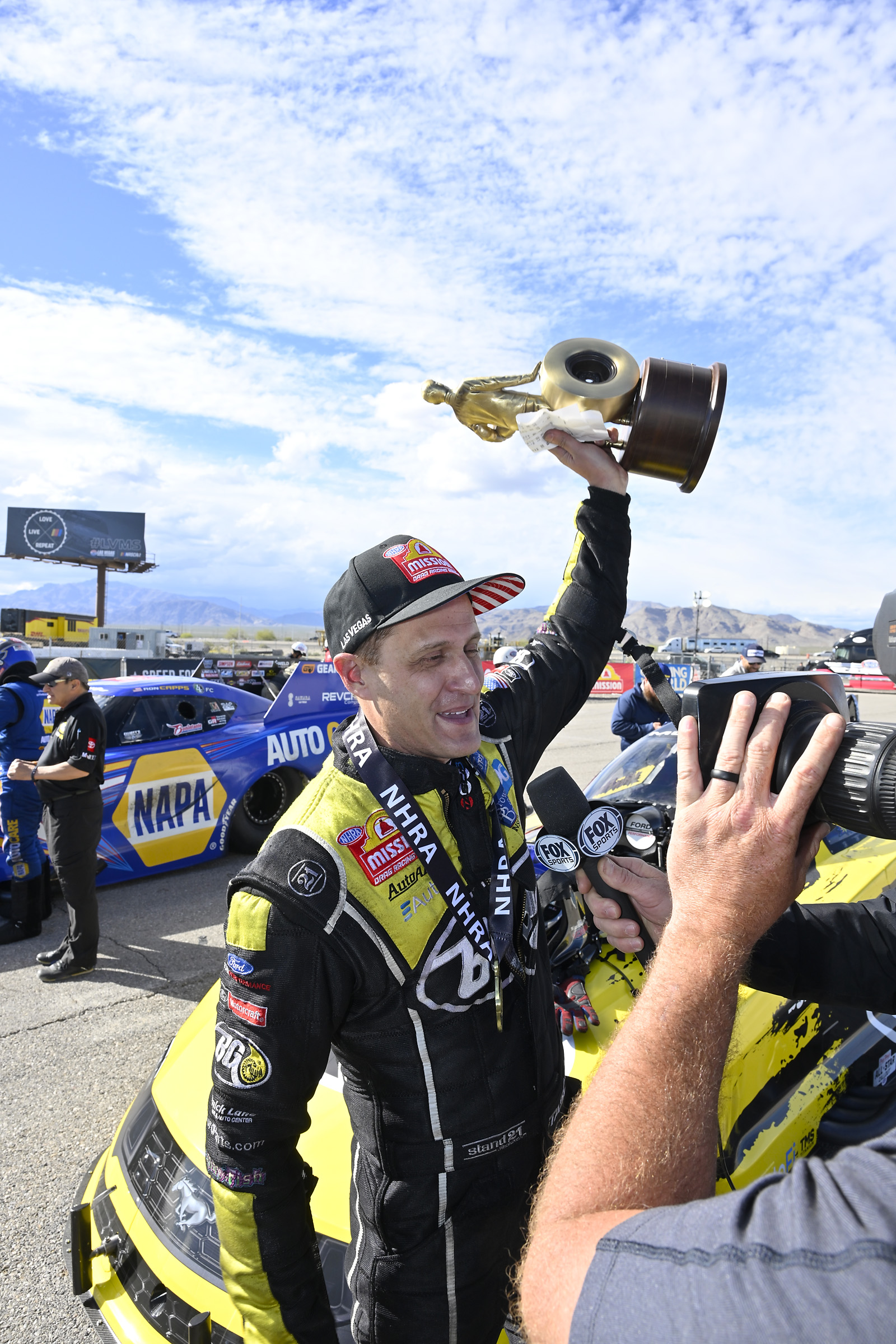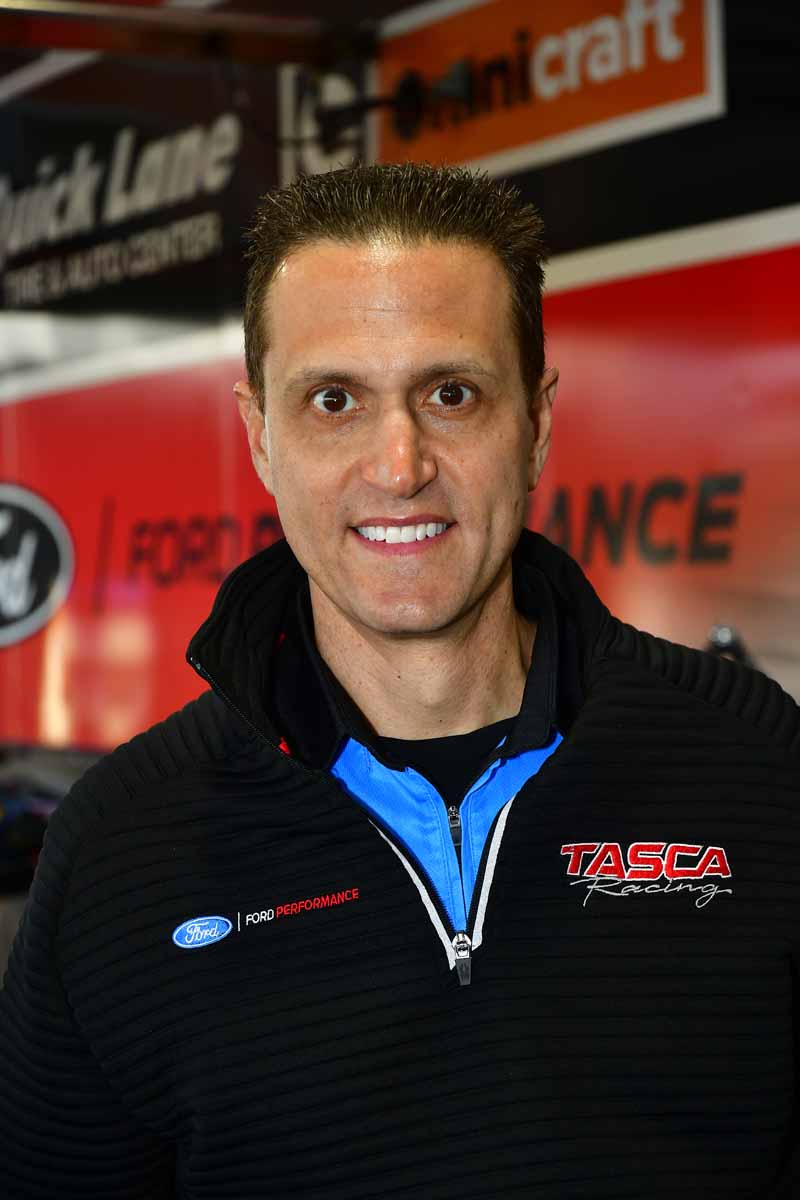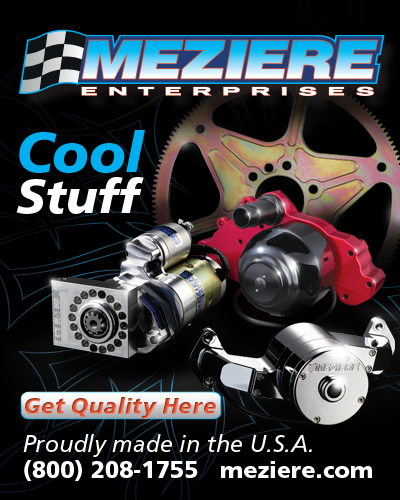BOB TASCA III ENDS UP IN THE DOGHOUSE AGAIN OVER CONTROVERSIAL DQ
 Bob Tasca III made a monster of a run Friday night, stopping the timers during the NHRA 4-Wide Nationals at zMax Dragway at 3.849 seconds at 335.32 miles per hour. The run was good enough for 16th in the field.
Bob Tasca III made a monster of a run Friday night, stopping the timers during the NHRA 4-Wide Nationals at zMax Dragway at 3.849 seconds at 335.32 miles per hour. The run was good enough for 16th in the field.
Well, not initially. The run was good enough for No. 2 in the sixteen-car field. At the conclusion of the Q2 session, however, it became apparent that the run was living on borrowed time as the NHRA’s technical department confiscated an intake manifold the series deemed questionable and unacceptable by Noon on Saturday.
Tasca was beside himself on Sunday morning, and what was expected to be an appearance on the NHRA Insider podcast on Saturday morning turned toxic in a hurry.
“We’ve had better mornings this morning,” Tasca said. “I spent with NHRA Tech and not to derail the show, but we’re not quite sure we’re going to race today, quite frankly. We may pack up and leave and the harsh reality is that our run last night was in question due to our manifold. We put an AJ manifold on our car, first time we have ever done that at a race and we flow our manifolds. The reason why we flow them, and Tony will attest, there is no two manifolds the same.”
And what had begun as a largely unpublicized, extended tech inspection following Funny Car Q2 suddenly became the talk of the pits at zMAX Dragway.
NHRA released a statement shortly following the DQ’d run stating, “The intake manifold is not allowed to be altered in any form from its original, accepted state. Tasca’s intake manifold is determined to have been media blasted, and this violation is considered a technical infraction. Additional penalty may apply after further evaluation.”
Media blasting, also known as sandblasting, is a process that uses high-speed air, water, or steam to propel abrasive materials against a surface to remove contaminants, paint, coatings, or other substances.
 Tasca adamantly denies anything being done to his manifolds other than standard flowing.
Tasca adamantly denies anything being done to his manifolds other than standard flowing.
“The only thing that we do to the manifolds, we flow the manifold,” Tasca explained. “I’m not the one flowing the manifold, but there’s a process of cleaning it that Keith Wilson does so we can get flow numbers in each part because they’re a cast part. They’re not a CNC part. It’s not a billet part. There are no two manifolds that flow the same. There are no two manifolds that flow the same. No one... there are just differences.
“What we do is we’re able to know what each port flows and we’re able to nozzle that port up or down based on what the flow is. I guess it changes the color of the material. It’s magnesium. I guess whatever fluid he uses changes the color of it.”
What really irritated Tasca about the situation is that when he heard rumors that he was alleged to have illegal manifolds, he made a point to reach out to the NHRA ahead of the NHRA Gatornationals in March and provide his manifolds for inspections. Tasca said he provided three to the NHRA, who took possession of them and inspected them.
Tasca said NHRA returned the manifolds, and he figured everything was fine with them. He ran them through Vegas and faced no issues with tech. This weekend, he was running an identical unit manufactured by Alan Johnson.
“We just wanted to try a different manifold,” Tasca said. “It flowed better. We felt Alan’s part was a better part. Whether or not that is for sure, I have really no idea. This is the first race we ran. It could not be a better part. We feel it is a better part. We ran it. They asked for it after the run. We gave it to them.”
Tasca believed that when he left the track on Friday evening, he had no reason to expect anything different than his run would stand and that the part inspected was legal.
Tasca found out his run was going to be tossed because of an illegal manifold. He immediately inquired if there were dimensional changes and said NHRA officials told him there weren’t. The source of the disqualification was the color of the intake.
Tasca immediately sought out Johnson for clarification.
“I have the ultimate respect for Alan Johnson, and I said to him, ‘If my guys did something wrong. I will own up to it. It’s an embarrassment to me,” Tasca responded.
Tasca said Johnson adamantly stood on the legality of the product NHRA had chosen to disqualify.
Tasca said he was doing his due diligence because the intake manifolds in the confiscated identical except for the manufacturer. Tasca added that both flowed with the same, identical fluid.
Tasca said he was taken aback when he pointed this out to an NHRA official.
“Well, what about the manifolds I gave you in Gainesville?” Tasca said he countered. “They all were flowed with the same fluid. You gave them back to me.”
“Then the same official told me, ‘We didn’t tell you it was legal.”
Tasca said this response was a head-scratcher.
“Well, but you gave them back,” Tasca said he countered. “I’ve been running them all year.”
 Tasca said he was told NHRA had now determined the unit was illegal per the rule that says any modified part is DQable.
Tasca said he was told NHRA had now determined the unit was illegal per the rule that says any modified part is DQable.
“Now, that’s a very slippery slope because we all lap manifolds, we sand them down, we sand-blow our cases to blueprint them. Everyone does it. That’s a modification. We blow up cylinder heads. We weld them up, and we CNC them. None of them return back to the original manufacturer’s specific dimensions.”
Tasca said he can understand if the alleged media blasting provides a performance advantage. He’s adamant they don’t.
Hours before Saturday’s session, Tasca was still determining whether he was going to continue racing or throw in the towel. He only had unflowed manifolds, and without any of the data would have been a fruitless effort.
A last-minute intake manifold by Steve Torrence Racing kept Tasca in the race.
“The truth is I feel that there’s a little bit of common sense that needs to be implemented when you make these kind of decisions as a sanctioning body,” Tasca said. “I feel it’s lacking. I respect their decision. I respect the integrity of the sport above all things. If we do something wrong, if my guys cross the line, then we have to own it. I do not feel beyond a reasonable doubt we’ve crossed any line whatsoever when we’re having a conversation about color.”
As Tasca points out, the rule of no modifications is vague, and certainly, if something changes the coloration of the intake, it doesn’t necessarily constitute a modification.
Returning to the header controversy from Las Vegas last October, Tasca could conclude that he’s being targeted. He declines to use this terminology, choosing instead disappointed.
“I feel that our car runs really good,” Tasca said. “We run a lot more speed than most, although there was plenty of drivers that ran 335 out here yesterday, and they certainly are scrutinizing us. The header thing was a complete joke. Complete joke. Once that all came out, people agreed. This manifold deal, I believe, is an even bigger joke because there was no dimensional change. The header, at least you could say it, was like a tap of a hammer, but the manifold, there’s no dimensional change. It’s disappointing. I think the word is not targeted. It’s disappointing that a race team has to be put through this.”
Through it all, Tasca said he wants to have faith in the NHRA’s Tech Department.
“I believe that they try to do the best that they can with the resources that they have,” Tasca said. “I do believe they’re severely under-resourced because I asked a simple question: did you check every manifold in the pit?
“And their answer is, ‘We checked a lot of them.”
“Well, you didn’t check all of them. I feel that they probably need more resources to do their job better. But in this example, I feel there should be some degree of common sense that is implemented.”
Tasca climbed back to the top half of the field with a 3.894, 327 run in Q3.







































